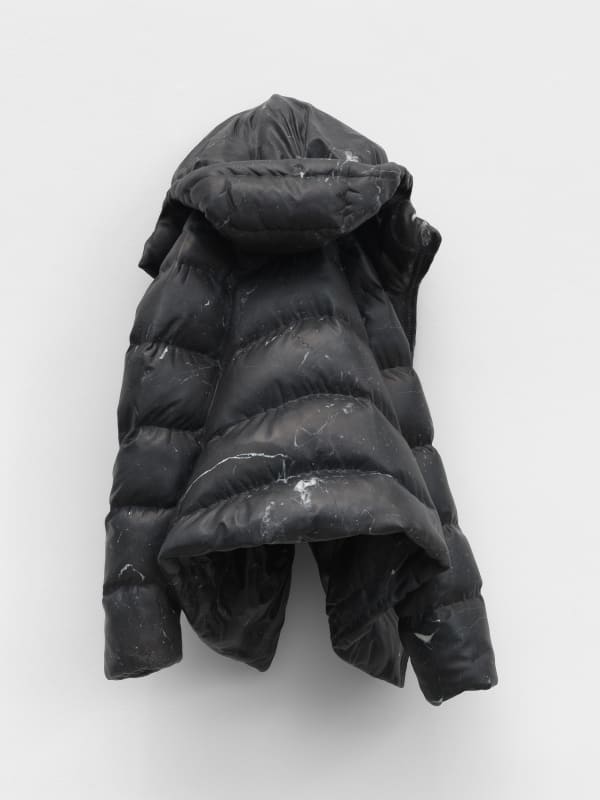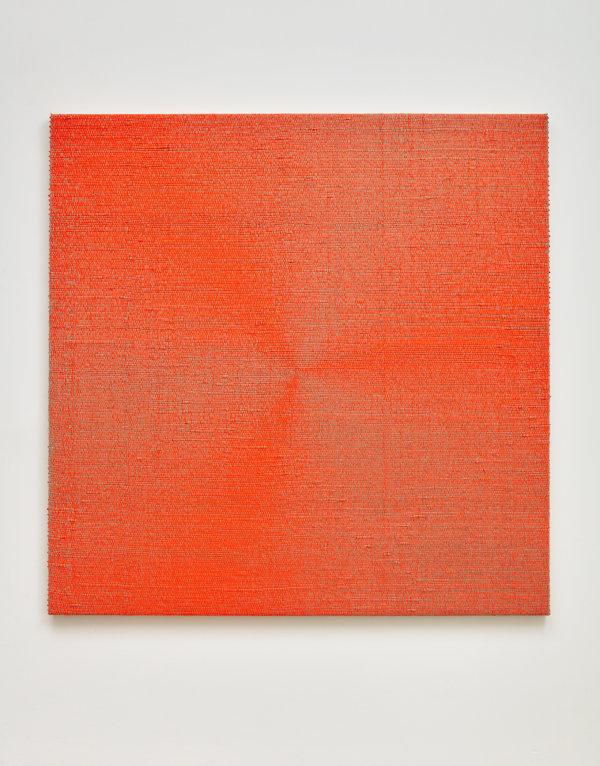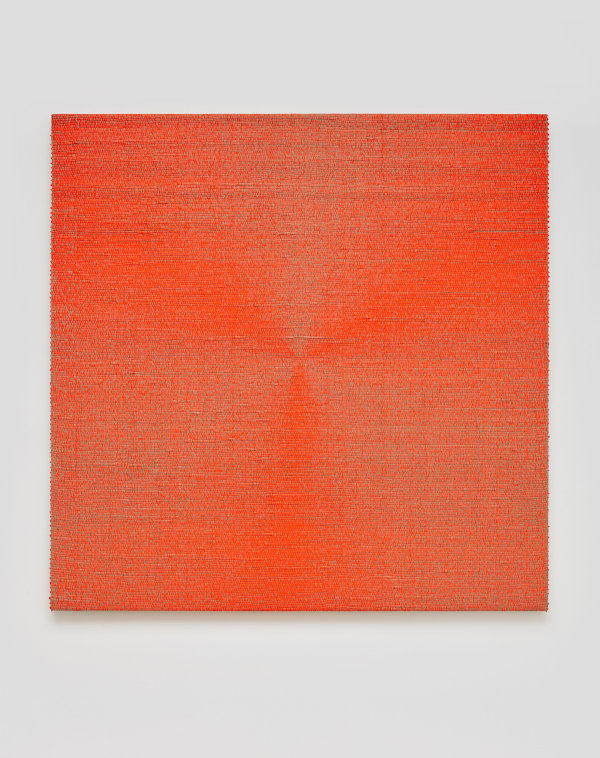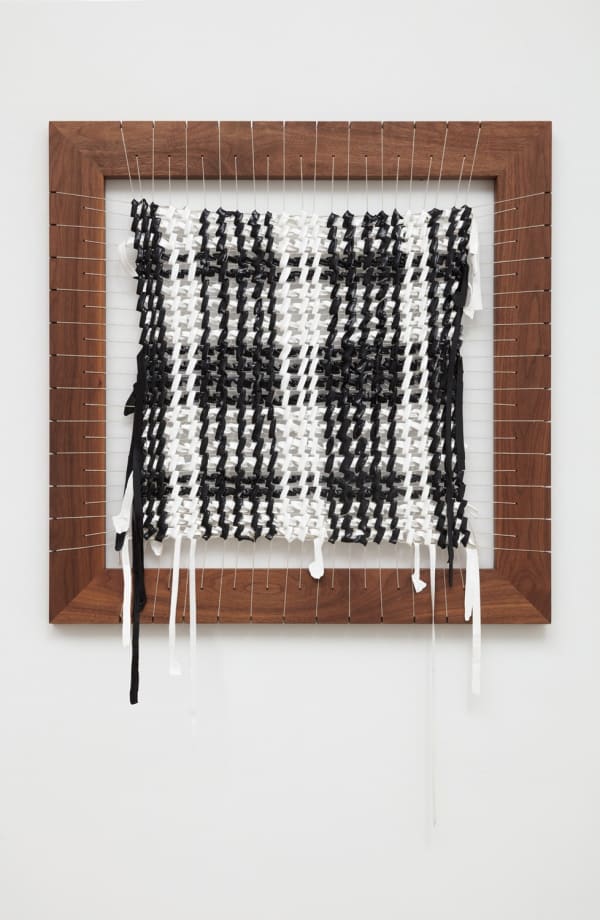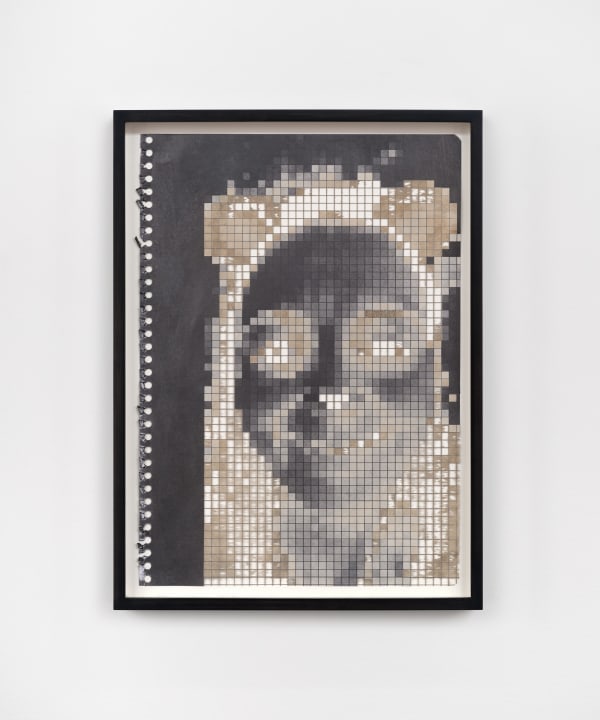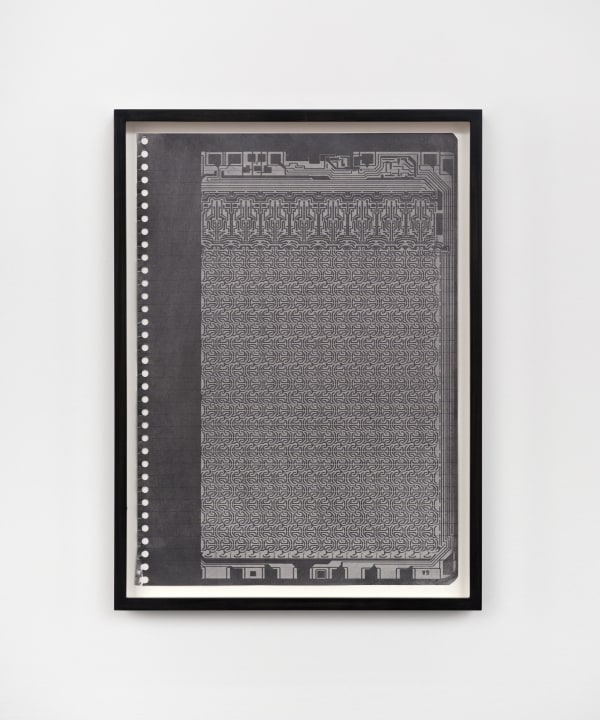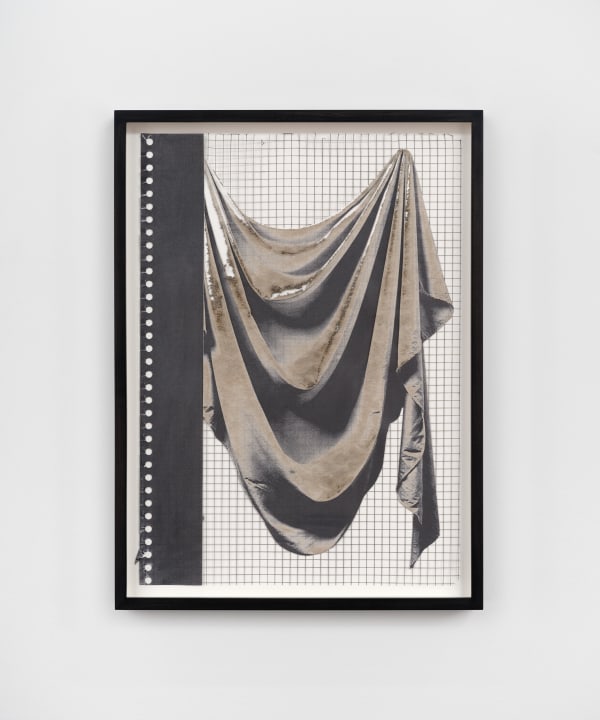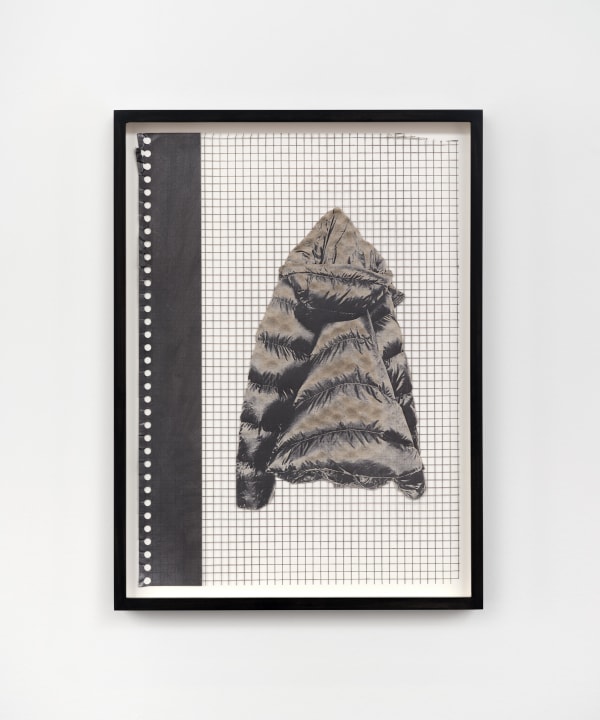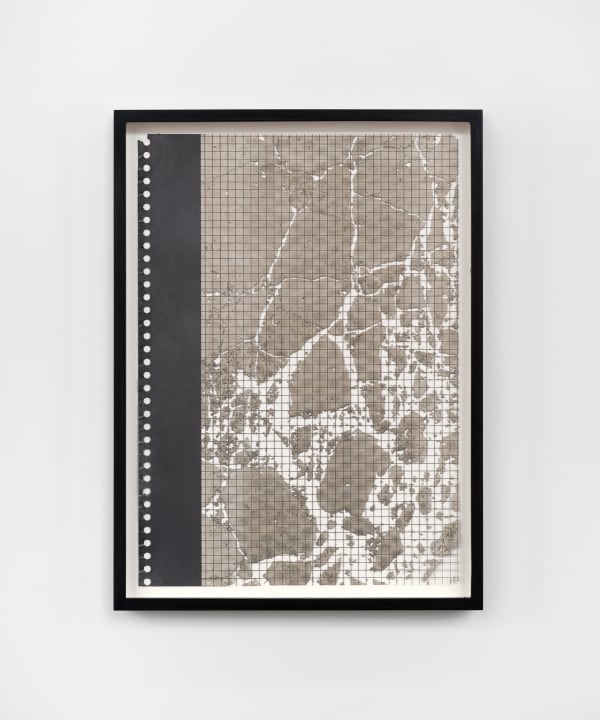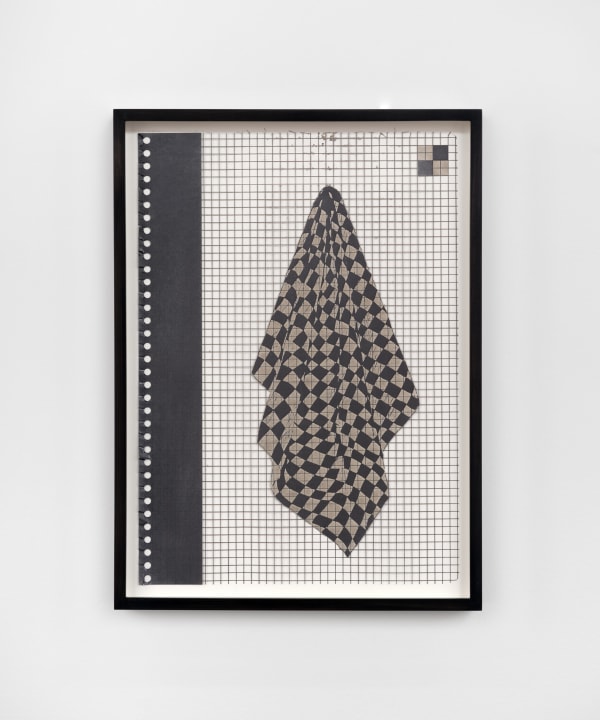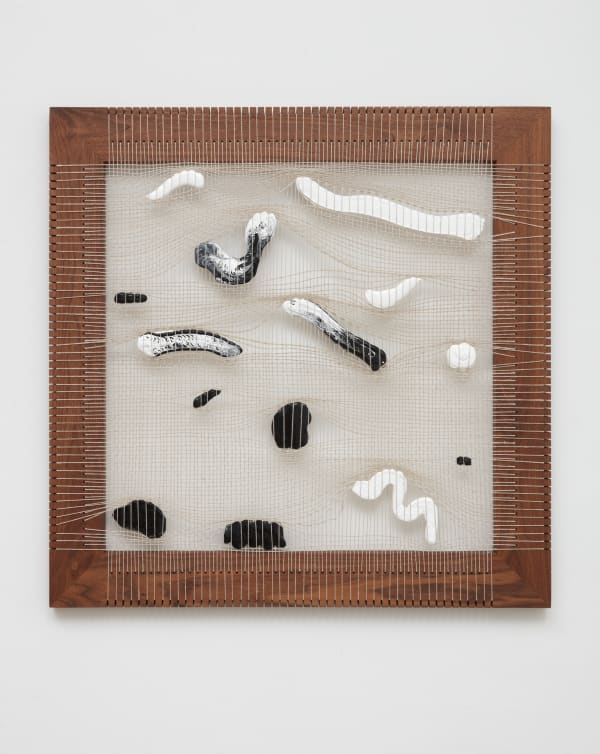Analia Saban: Flowchart: Tanya Bonakdar Gallery, New York
Tanya Bonakdar Gallery is pleased to present Flowchart, a solo exhibition of new works by Analia Saban in New York on view October 30 - December 18, 2025.
Known for merging traditional art historical practices with new technology, Saban continues her exploration of textiles, painting, drawing, and sculpture through the lens of coding, memory, systems, and materiality. In Flowchart, marble sculpture, woven paintings, and hand-etched encaustic works connect the history of art and weaving to the invisible infrastructures of the digital age.
At the entrance to the exhibition, the artist’s presence is marked by a Nero Marquina marble puffer jacket casually hanging on a hook. Referencing the material of Classical sculpture, yet carved by both the hand and the latest robotic technology, the work encapsulates a central concern in Analia Saban’s practice: the dichotomy of the hand versus the machine. In her explorations of fabric and form, she engages with the art historical tradition of drapery—a motif used from antiquity to the Renaissance to demonstrate skill, suggest movement, and embody the interplay of surface and depth. In Puffer (Patagonia, Nero Marquina), Saban takes a contemporary approach, carving an everyday winter jacket into a material steeped in history.
Through a deep engagement with new forms of technology, the exhibition connects the ancient logic of weaving to the computational systems that power contemporary life. On the back wall, three woven paintings depicting neon fan blades evoke the energy and heat generated by the massive servers that power today’s digital networks, from online shopping to artificial intelligence. On the adjacent walls, Saban presents Flowcharts depicting a visual algorithmic process – with instructions for how to “make a painting” – echoing the inputs that structure AI technologies. Her materials reflect the duality in these works: white encaustic made of beeswax, resin, and pigment layered with black oil stick is then carved back to reveal gestural marks of the artist’s hand. The illustrated prompts unfold as flowcharts mapping how to depict anatomy, hands, drapery, and gesture.
In the upstairs gallery, Saban merges weaving methods with early digital systems by combining the binary structure of a magnetic-core memory, the building blocks of early computers, with the grid of a loom. Reimagined as sculptural frames, these works transpose patterns of twill and plaid into textiles woven with dried acrylic paint, acting as threads. By comparing these foundational systems, Saban reveals similarities between cloth patterning, binary code, and the technologies that administer daily life.
Related to the works in the downstairs gallery, five tapestries depict blank flowcharts. Their elusive organization and hidden forms create a playful invitation for viewers to decipher, while their materiality deconstructs and re-invents conventional painting elements. Saban creates these textile works by interlacing linen threads as warp with long strips of dried, yet pliable acrylic paint as the weft. In the next room, a grid of 18 laser-carved notebook pages brings the intimate space of her studio notes into the gallery. Each sheet, meticulously engraved, brings together the language and vocabulary of Saban’s working process in sculptural form.
Upcoming, Saban will have a major solo exhibition at the Mildred Lane Kemper Art Museum in September 2027, which will open at the Los Angeles County Museum of Art (LACMA) in April 2027.
Born in 1980 in Buenos Aires, Argentina, Saban currently lives and works in Los Angeles. She received a BFA in Visual Arts from Loyola University in New Orleans in 2001, followed by an MFA in New Genres at the University of California in Los Angeles in 2005. In 2015-2016 Saban completed a residency at the Getty Research Institute.
Previous solo museum exhibitions include Modern Art Museum of Fort Worth, TX (2019); Qiao Space, Shanghai (2017); and Blaffer Art Museum, Houston (2016). Saban’s works are represented in the collections of the Museum of Modern Art, New York; Hammer Museum, Los Angeles; Museum of Contemporary Art, Los Angeles; Los Angeles County Museum of Art in Los Angeles; Metropolitan Museum of Art, New York; National Gallery of Art, Washington D.C.; Hessel Museum of Art at Bard College, New York; Cleveland Museum of Art, Ohio; Bronx Museum, New York; Norton Museum of Art, Florida; Centre Pompidou, Paris; San Jose Museum of Art; Buffalo AKG Art Museum, among others.
Photo by Dan Bradica
-
 Puffer (Patagonia, Nero Marquina)
Puffer (Patagonia, Nero Marquina) -
 Flowchart (Painting Gesture)
Flowchart (Painting Gesture) -
 Flowchart (Painting Anatomy)
Flowchart (Painting Anatomy) -
 Woven Three-Blade Fan (Fluorescent Orange) #1
Woven Three-Blade Fan (Fluorescent Orange) #1 -
 Woven Three-Blade Fan (Fluorescent Orange) #2
Woven Three-Blade Fan (Fluorescent Orange) #2 -
 Woven Three-Blade Fan (Fluorescent Orange) #3
Woven Three-Blade Fan (Fluorescent Orange) #3 -
 Flowchart (Painting Drapery)
Flowchart (Painting Drapery) -
 Flowchart (Painting Hands)
Flowchart (Painting Hands) -
 Core Memory, Plaid (Black, White, and Fluorescent Orange)
Core Memory, Plaid (Black, White, and Fluorescent Orange) -
 Core Memory, Brushstrokes (Fluorescent Orange)
Core Memory, Brushstrokes (Fluorescent Orange) -
 Tapestry (Flowchart, Portrait), Linen on Paint
Tapestry (Flowchart, Portrait), Linen on Paint -
 Tapestry (Flowchart, Still Life), Paint on Linen
Tapestry (Flowchart, Still Life), Paint on Linen -
 Tapestry (Flowchart, Landscape), Linen on Paint
Tapestry (Flowchart, Landscape), Linen on Paint -
 Tapestry (Flowchart, Drapery), Paint on Linen
Tapestry (Flowchart, Drapery), Paint on Linen -
 Tapestry (Flowchart, Anatomy), Linen on Paint
Tapestry (Flowchart, Anatomy), Linen on Paint -
 Core Memory, Zig Zag Twill (Black)
Core Memory, Zig Zag Twill (Black) -
 Core Memory, Plaid (Black and White)
Core Memory, Plaid (Black and White) -
 Core Memory, Plaid (Black)
Core Memory, Plaid (Black) -
 Core Memory, Houndstooth (Black and White) #1
Core Memory, Houndstooth (Black and White) #1 -
 Studio Notes (Flowchart)
Studio Notes (Flowchart) -
 Studio Notes (Prompt Drawing: Selfie)
Studio Notes (Prompt Drawing: Selfie) -
 Studio Notes (Brushstrokes)
Studio Notes (Brushstrokes) -
 Studio Notes (White Noise)
Studio Notes (White Noise) -
 Studio Notes (256-Bit Static Ram, 4100, Fairchild, 1970)
Studio Notes (256-Bit Static Ram, 4100, Fairchild, 1970) -
 Studio Notes (Towel)
Studio Notes (Towel) -
 Image of Studio Notes (Prompt Drawing: Selfie).
Image of Studio Notes (Prompt Drawing: Selfie). -
 Studio Notes (Three-Blade Fan)
Studio Notes (Three-Blade Fan) -
 Studio Notes (GeForce 256 Graphics Card, Nvidia, 1999)
Studio Notes (GeForce 256 Graphics Card, Nvidia, 1999) -
 Studio Notes (Puffer, Patagonia)
Studio Notes (Puffer, Patagonia) -
 Analia Saban Studio Notes (Broken Concrete)
Analia Saban Studio Notes (Broken Concrete) -
 Studio Notes (Lace Doily)
Studio Notes (Lace Doily) -
 Studio Notes (Computer Fan)
Studio Notes (Computer Fan) -
 Studio Notes (Checkered Cloth)
Studio Notes (Checkered Cloth) -
 Studio Notes (Plaid)
Studio Notes (Plaid) -
 Studio Notes (Drawing Variables)
Studio Notes (Drawing Variables) -
 Studio Notes (Circuit Board)
Studio Notes (Circuit Board) -
 Studio Notes (Houndstooth)
Studio Notes (Houndstooth) -
 Core Memory, Brushstrokes (Black and White)
Core Memory, Brushstrokes (Black and White)














